Search Results
Back to JTS Torah Online's Main page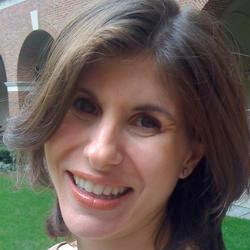
A Job Well Done
Feb 26, 2011 By Abigail Treu | Commentary | Text Study | Vayak-hel
Who gets the credit for a job well done? The work of the Tabernacle was not a solo endeavor; indeed Exodus 31:6 tells us that Oholiab ben Ahisamach and “all who are skillful” were enlisted for the undertaking. The rabbis’ populist bent seeps through the midrash here and elsewhere as the work of the Tabernacle is discussed.
Read More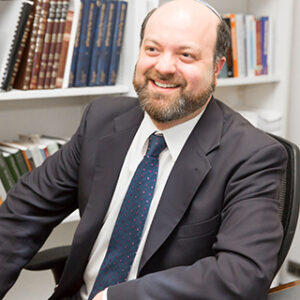
Preparing Ourselves to Receive Shabbat
Mar 20, 2009 By Eitan Fishbane | Commentary | Pekudei | Vayak-hel
“On six days work may be done, but on the seventh day you shall have a Sabbath of complete rest, holy to the Lord . . .”
So begins the speech of Moses to the Israelites in Parashat Va-yakhel. But the text almost immediately shifts to discuss the intricate details of the Mishkan (Tabernacle) and its construction at great length, neglecting any elaboration on the opening commandment. This move leaves the reader wondering why Shabbat was mentioned here at all! Indeed, this strange juxtaposition is remarkably similar to last week’s parashah (Ki Tissa). In that case, the Shabbat commandment is placed after remarks about the Mishkan—though there too its mention is brief and seemingly out of place.
Read More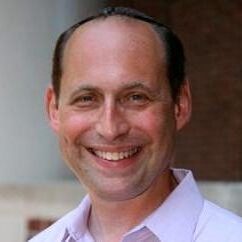
The Challenge of Finding Balance
Mar 1, 2008 By David M. Ackerman | Commentary | Vayak-hel
If intricate descriptions of construction details capture your imagination, then Va-yakhel is your parashah!
Read More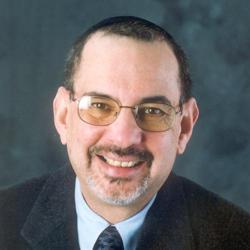
Inspiring Our Institutions
Mar 17, 2007 By Steven Brown | Commentary | Pekudei | Vayak-hel
The detailed description of the completion of the Mishkan in all its splendor can overwhelm us with a plethora of information, blinding us to the power and importance of this week’s double parashah concluding the book of Exodus.
Read More
A Plurality of Voices
Mar 25, 2006 By Matthew Berkowitz | Commentary | Vayak-hel
Community is the heart of the Jewish people. To nurture a sense of holiness within our synagogues, it is critical to work toward strengthening a vision of communal responsibility. This notion is emphasized in the opening of this week’s Torah reading, Parashat Va–yakhel: “Moses assembled the community of the children of Israel, saying to them, ‘These are the obligations that God commanded to do them'” (Exodus 35:1). Not only does the general opening of the reading focus on community, but more significantly, the very word with which the parashah begins, vayaqhel, contains the Hebrew root qof–hey–lamed (meaning “community”) — for this is not simply the act of assembling, but it is gathering together a community. What will be the nature of the community we build?
Read More
Two Kinds of Community
Mar 25, 2006 By Matthew Berkowitz | Commentary | Vayak-hel
Community is the heart of the Jewish people. To nurture a sense of holiness within our synagogues, it is critical to work toward strengthening a vision of communal responsibility. This notion is emphasized in the opening of this week’s Torah reading, Parashat Va–yakhel: “Moses assembled the community of the children of Israel, saying to them, ‘These are the obligations that God commanded to do them'” (Exodus 35:1). Not only does the general opening of the reading focus on community, but more significantly, the very word with which the parashah begins, vayaqhel, contains the Hebrew root qof–hey–lamed (meaning “community”) — for this is not simply the act of assembling, but it is gathering together a community. What will be the nature of the community we build?
Read More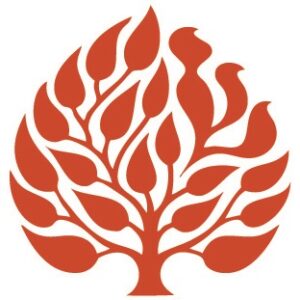
A Nation Comes Together
Mar 20, 2004 By Lewis Warshauer | Commentary | Pekudei | Vayak-hel
The Torah is the epic of the founding of the Israelite nation. The Book of Genesis charts the development of the Abraham-Isaac-Jacob family into a small clan; the Book of Exodus shows the development of that clan into a nation. At the end of Genesis, Jacob calls to his sons together to hear his final words:
Read MoreCome together and hearken, O sons of Jacob
Hearken, O sons of Israel (Genesis 49:2)
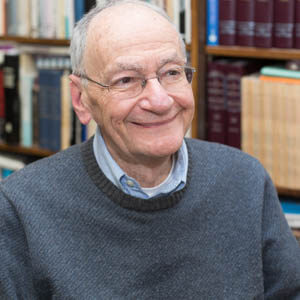
A Holy Inventory
Mar 20, 2004 By Ismar Schorsch | Commentary | Pekudei | Shabbat Rosh Hodesh | Vayak-hel
In the ever-fertile imagination of the Rabbis there are no arid texts. The most prosaic can readily become the occasion for an insight of great consequence. By way of example, I will focus on a narrative fragment tucked away in the middle of the lists that make up the bulk of the final two parashot of Exodus. The lesson derived from it is one that has lost none of its moral force.
Read More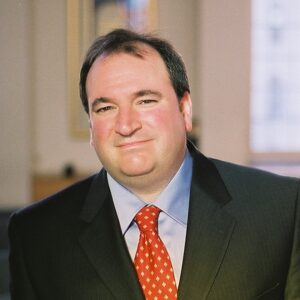
The Language of Names
Mar 1, 2003 By Charles Savenor | Commentary | Vayak-hel
In 1989, during the flight to my Junior Year Abroad experience in Israel, I chatted with the El Al flight attendants at the rear of the airplane. When asked my name, I made the conscious decision to introduce myself using my Hebrew name, Simcha. As these women of sephardic descent heard my name, they roared out in laughter. “Simcha, you cannot be Simcha. Simcha is a girl’s name.” They explained that in modern Israeli society, especially in sephardic circles, only girls went by the name Simcha.
Read More
From Behind a Cloud
Mar 9, 2002 By Lewis Warshauer | Commentary | Pekudei | Vayak-hel | Purim
The Book of Exodus ends on a note of triumph. The liberation from Egypt was followed by the giving of Torah and the building and dedication of the Tabernacle. God forgives the Israelites for their sin with the golden calf — and, in the closing lines of the book, God’s presence, in the form of a cloud, comes to rest upon the Tabernacle. Nahmanides, in his closing comment on this, the second book of the Torah, gives it the title: the book of redemption.
Read More
One Signal, Many Prophets
Mar 2, 2002 By Ismar Schorsch | Commentary | Pekudei | Vayak-hel
This week’s double parashah brings the book of Exodus to a triumphant close. No sooner is the Tabernacle erected (on the first of Nisan, the start of a new year), than it is graced by God’s presence. “When Moses had finished the work, the cloud covered the Tent of Meeting and the Presence of the Lord filled the Tabernacle. Moses could not enter the Tent of Meeting, because the cloud had settled upon it and the Presence of the Lord filled the Tabernacle” (40:33-35). The repetition serves to highlight the fact that God had taken up residence in the sanctuary to which all of Israel had contributed. God’s favor was visibly certifiable. The nation would not journey unaccompanied.
Read More
A Circle of Obligation
Mar 3, 2000 By Matthew Berkowitz | Commentary | Vayak-hel
In last week’s parasha, Ki Tissa, we heard of the Israelites’ ultimate act of disloyalty – the creation and worship of a Golden Calf. In contrast, this week’s parasha, Va–Yakhel, paints a portrait of absolute devotion. Only three chapters after the Golden Calf episode, the Israelites are now engaged in one of the greatest acts of worship: building a tabernacle which will house the Presence of God. This week’s loyalty stands in stark contrast to last week’s disloyalty. These two episodes, however, not only puzzle the reader with their disparity but serve to shed light on each other.
Read More
Why a Temple?
Mar 21, 1998 By Ismar Schorsch | Commentary | Pekudei | Vayak-hel
The final two readings this week, which close the book of Exodus, tell of the actual construction of the Tabernacle. In a leap year, with its additional month, we would have devoted one Shabbat to each parasha and read for the haftara a selection pertaining to Solomon’s construction of the First Temple. In fact, the two haftarot are sequential: I Kings 7:40-50 for Vayakhel and I Kings 7:51-8:21 for Pekuday. Thus the synagogue naturally associated the completion of Moses’s mobile sanctuary with the completion of Solomon’s permanent Temple in Jerusalem.
Read More
A Feminist Mandate
Apr 8, 1997 By Ismar Schorsch | Commentary | Vayak-hel
The recent conference in New York City on “Feminism and Orthodoxy” heralds a major escalation in the confrontation between Jewishly well-educated Orthodox feminists and a bitterly defensive rabbinic establishment. The word on the street in the weeks before the conference was that it would be a brief one, implying that the two topics had nothing in common. But reality proved the cynics wrong. Nearly a thousand Orthodox women of all stripes convened for two days of study, prayer and protest to challenge the gender inequities that abound in contemporary Orthodoxy. The plight of women stranded without benefit of a Jewish divorce from their husbands evoked an added measure of outrage.
Read More
The Seeds of Democracy
Feb 25, 1995 By Ismar Schorsch | Commentary | Vayak-hel
The Hertz Humash often confronts us with bones of contention long buried. Written in the interwar period by the Chief Rabbi of the British Empire, Joseph H. Hertz, the first graduate of the Seminary in 1894, it resonates with the echoes of Christian biases and Jewish anxieties stirred up by the Jewish struggle for equal rights in the nineteenth century. A fine example is to be found in this week’s parasha on Exodus 35:34, where Rabbi Hertz writes: “The opinion is often expressed that there is no art in Judaism; that the Jew lacks the aesthetic sense; and that this is largely due to the influence of the Second Commandment which prohibited plastic art in Israel (p. 376).”
Read More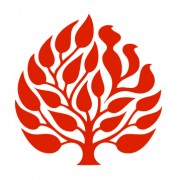
Vayak-hel-Pekudei
Jan 1, 1980
1 Moses then convoked the whole Israelite community and said to them:
These are the things that the Lord has commanded you to do: 2 On six days work may be done, but on the seventh day you shall have a sabbath of complete rest, holy to the Lord; whoever does any work on it shall be put to death.
Read More
SUBSCRIBE TO TORAH FROM JTS
Our regular commentaries and videos are a great way to stay intellectually and spiritually engaged with Jewish thought and wisdom.




